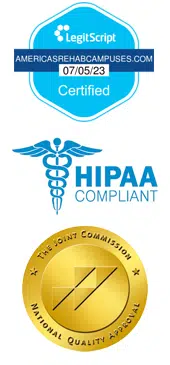
With the winter months approaching, many of us are preparing for less time in the sun and more time indoors. Now the idea of cozy clothes and warm fires is starting to fill our heads, but not everyone is as excited for this time of year. Seeing as over 4 million Americans suffered from a major depressive episode in 2020 and 21 million reported at least one episode in their lifetime, it’s no surprise that a large portion of the population isn’t looking forward to winter.
The symptoms of depression are what drive individuals to turn to drugs and alcohol to cope, developing substance use disorder (SUD) over time. Seasonal Affective Disorder, or aptly referred to as SAD, can impact a person even if the rest of their year had no signs of depression or struggles with SUD. This seasonal depression is just one form of depression facing Americans, but each one can co-occur with SUD which escalates the symptoms of both conditions.
What Exactly Is Depression?
Saying that you’re depressed has become a common way to describe a general sadness or gloomy demeanor but diagnosable depression is much more than that. It involves multiple symptoms that impact you physically and mentally, oftentimes interfering with performance at school or work. Symptoms can range from infrequent and mild to constant and severe and include:
- Rapid weight loss or gain due to appetite changes
- Insomnia or oversleeping
- Low energy, motivation, and interest in hobbies or activities
- Involuntary actions such as pacing, leg shaking, and chewing on non-food items
- Trouble concentrating
- Lack of self-worth
- Constantly feeling sad regardless of situation
When these symptoms have been felt over a long period of time, they start becoming signs of depression. For SAD, symptoms typically need to occur each winter for three years in a row before being considered as a diagnosis. Even if you aren’t diagnosed with depression, the presence of symptoms can make daily life difficult to enjoy and can open the door to substance abuse as a coping mechanism. Adolescents between 12 and 17 years old who have experienced a major depressive episode are more than twice as likely to abuse drugs or alcohol than their peers.
Where Does Substance Use Disorder Fit In?
Drugs and alcohol are both used as a form of self-medication by those with depression in order to suppress and ignore them. For some, they believe they can only ever feel “normal” when under the influence but they’re actually just hiding the problem while also making it worse under the surface. SUD often occurs in those who seek out substances for coping due to the development of dependencies within the mind and body.
A dependency on a particular substance happens when your central nervous system starts altering how it functions to accommodate the presence of drugs or alcohol. One example is the natural production of certain chemicals that are made when taking a substance that creates feelings of euphoria. Because a substance can make the brain produce these chemicals on their own, the brain simply stops doing it itself. This leads to extreme feelings of sadness or depression when ending substance abuse which then causes individuals to return to using once again.
Do You Need Help Quitting?
Whether it’s for you or someone you care about, looking into available addiction treatment programs that also help treat underlying mental illness is the first step to recovery. For a free consultation about treatment options, accepted insurances, or anything in between, we encourage you to reach out to the compassionate staff at ARC today to learn more.

